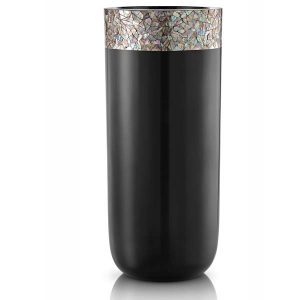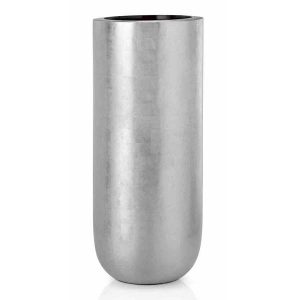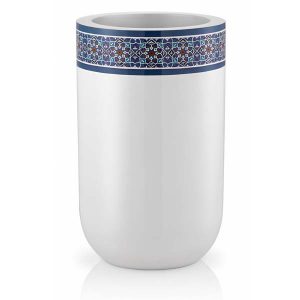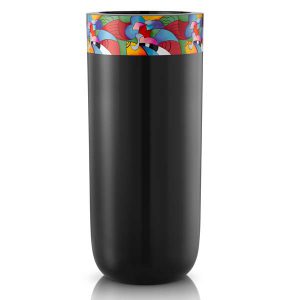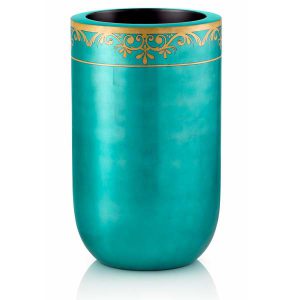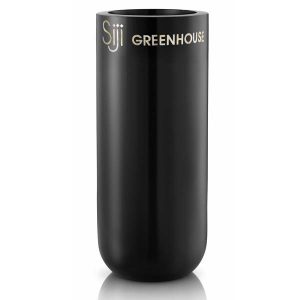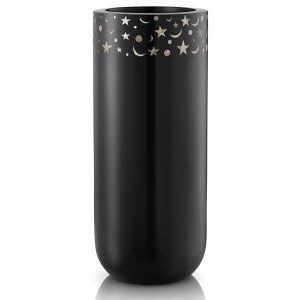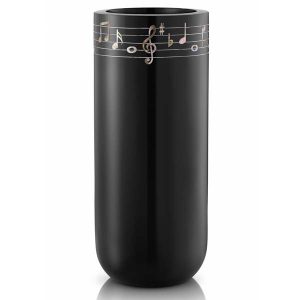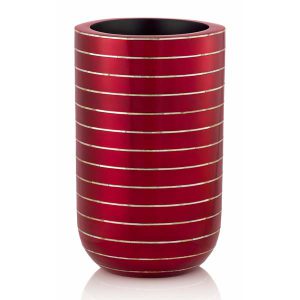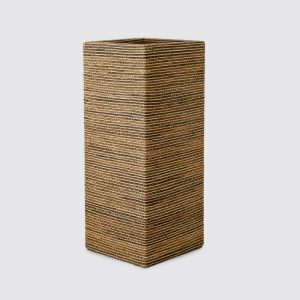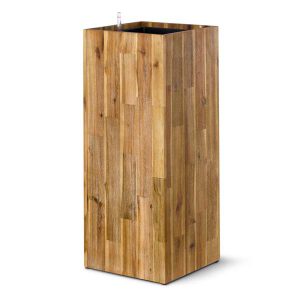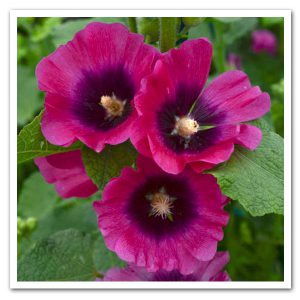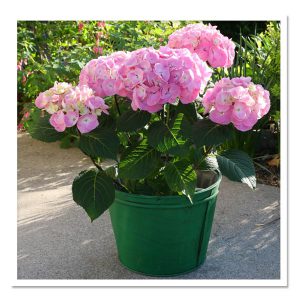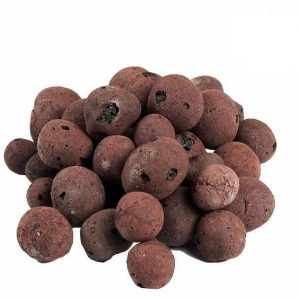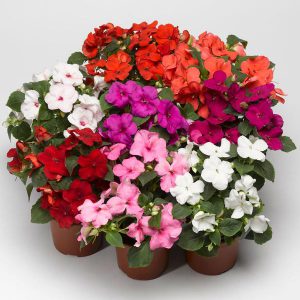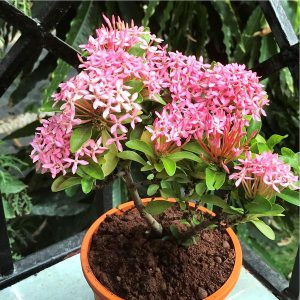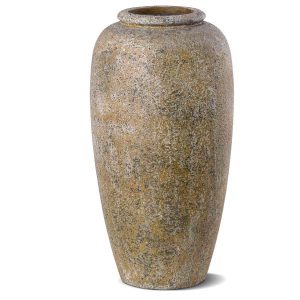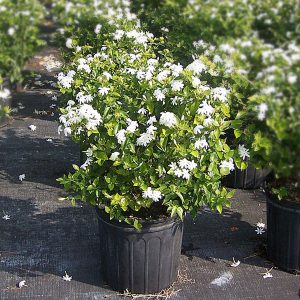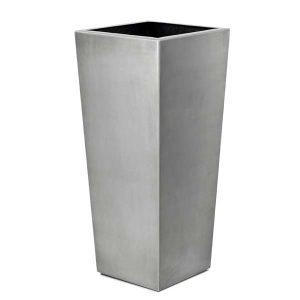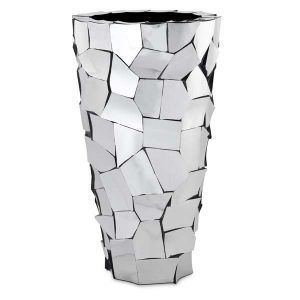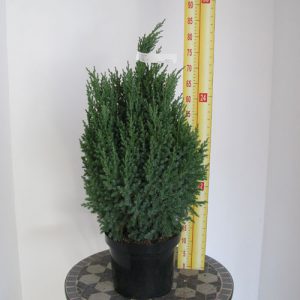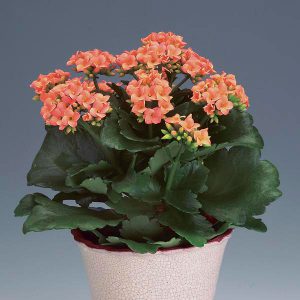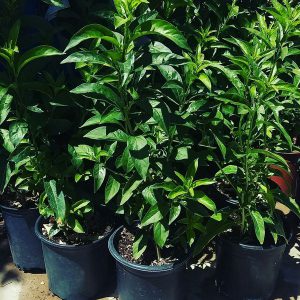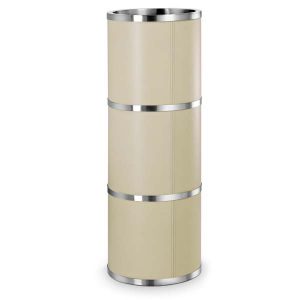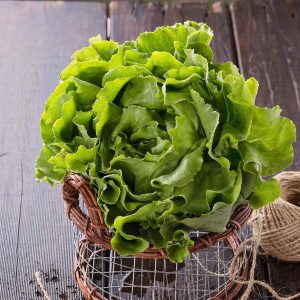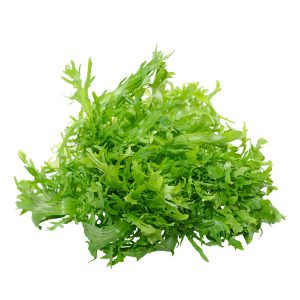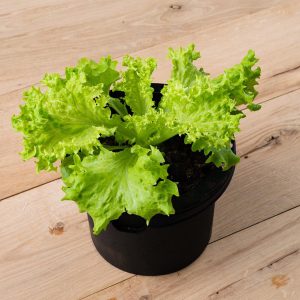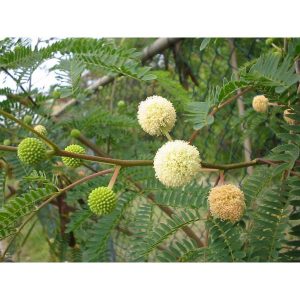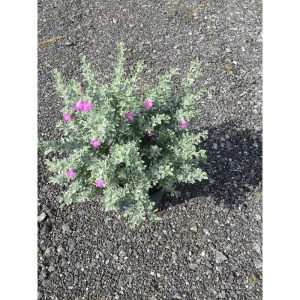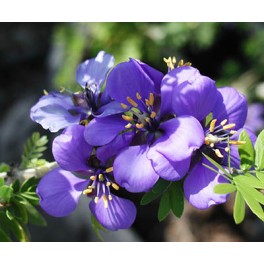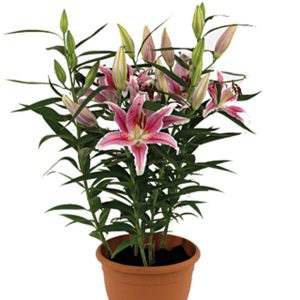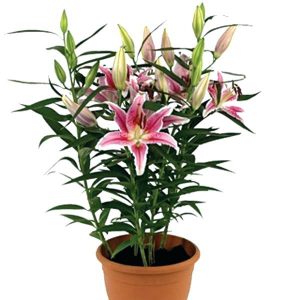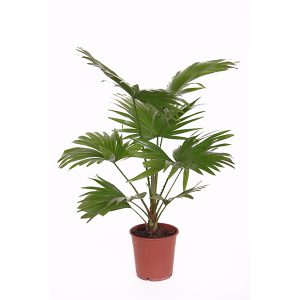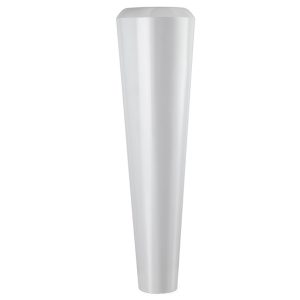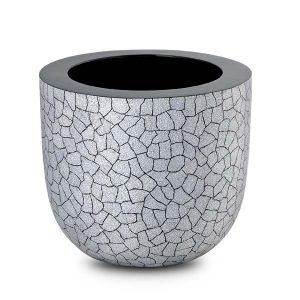Shop
Hollyhocks plants
The flowering stalks of the hollyhock, Alcea rosea, are covered in buds from the top all the way down to the rosette of foliage at the base. Once they are fully grown and ready to burst into color, these blooms start at the bottom and slowly work their way up, unfurling a little at a time. As the blooms continue to open, there will typically be several blooms per stalk all opening at once to create beautiful columns of rainbow-worthy color.
AED 45.00Add to cart
Hydrangea Blue ‘Real Feel’
Hydrangea Blue
The flowering plants (angiosperms), are the most diverse group of land plants. The first flowering plants known to exist are from 160 million years ago. They diversified enormously during the Lower Cretaceous and became widespread around 120 million years ago. It is generally assumed that the function of flowers, from the start, was to involve animals in their reproduction processes.
By so doing plants greatly improved their reproductive efficiency and genetic diversity. Many animals contribute, insects, birds, bats monkey’s etc. interestingly red flowers will be pollinated by animals that can see ‘red’ in the spectrum, (like birds and monkeys). Rarely will they be pollinated by insects which can see ultraviolet, but not red.
AED 140.00Add to cart
Hydrangea White ‘Real Feel’
Hydrangea White ‘Real Feel’
The flowering plants (angiosperms), are the most diverse group of land plants. The first flowering plants known to exist are from 160 million years ago. They diversified enormously during the Lower Cretaceous and became widespread around 120 million years ago. It is generally assumed that the function of flowers, from the start, was to involve animals in their reproduction processes.
By so doing plants greatly improved their reproductive efficiency and genetic diversity. Many animals contribute, insects, birds, bats monkey’s etc. interestingly red flowers will be pollinated by animals that can see ‘red’ in the spectrum, (like birds and monkeys). Rarely will they be pollinated by insects which can see ultraviolet, but not red.
AED 140.00Add to cart
Hydro stones
When searching for information on this subject, you will find there are several names it goes by: expanded clay pebbles, leca clay, and clay balls are all examples. It is made by heating clay to over 2,000 degrees Fahrenheit using a rotary kiln, which gives it that signature pebbly form. This process fills the clay with little air bubbles, making it perfect for holding oxygen as well as moisture around plant roots. It can be mixed with soil or used alone.
AED 35.00Add to cart
impatiens
Impatiens is one of the most popular annual flowers, due to their brightly color blooms and their ability to grow in shady areas. The most commonly grown cultivars are short plants, attaining a height of not more than 1 foot. Some types, such as the ‘Super Elfin’ series, stay much shorter. Impatiens flowers come in a variety of colors, including white, red, pink, violet, coral, purple, and (a relative newcomer) yellow.
AED 15.00Read more
Ixora plant
The best floral displays are produced by Ixora grown in full sun situations. Well-drained soil and moderate to slightly acidic pH are crucial to growing an Ixora bush. The plant develops chlorosis when installed in alkaline soils. Keep the soil evenly moist and prune the plant when it gets unruly. Ixora responds well to shearing and makes an excellent low hedge with its 4 to 6 foot height. Propagation of the shrub is through stem cuttings which can be rooted with the help of a rooting hormone. The flowers also occasionally produce a dark purple to black berry with seeds that are sometimes viable. Clean the pulp off the seed and soak it over night. Plant in a 2-inch pot filled with good seed starter mix. Moisten the mixture and fasten a plastic bag over the pot. Place in a warm location with moderate light. Keep the pot moist and move it to bright light as soon as the seed has germinated.
AED 25.00Add to cart
Jasmine (millingtonia hortensis)
The jasmine tree (Millingtonia hortensis) has a number of other common names, including cork tree and nim (in Hindi), because this beautiful tree originates in Asia, and flourishes wild and through cultivation, in India. Its botanical name honors Thomas Millington, an 18th century English botanist. The tree is mainly ornamental in character, tall and graceful, reaching heights of around 80 feet, but not especially hardy, with fairly sparse, brittle branches and bark. However, regular pruning can keep the tree small if desired. The tree’s clusters of delicate, bell-shaped, silver-white flowers bloom in the spring, and again around November and December. They bloom at night and shed their flowers by morning. In India, the flowers are used in religious rituals. New pointed, oval leaves come through in the spring. The jasmine tree is a member of the Bignoniaceae family.
Juniperus chinensis outdoor
- Easily transplanted
- prefers moist, well-drained soil, but very adaptable
- full sun
- pH adaptable
- once established little maintence required
AED 250.00Read more
kalanchoe
Green Maintenance
Really Easy, Low Maintenance
- Water once every two weeks
- The White Princess loves bright light
- Let the soil dry out in between waterings
- The perfect indoor plant as its likes to be warm
- That is pretty much it. Sit back with your feet on the table & watch this beautiful green creation grow in all of its glory!
-
Where To Put Me?
Fool-Proof Guide to Keeping Me Alive!
- Bedroom
- Living Room
- Kitchen
Bathroom- Office
- Reception
AED 30.00Add to cart
Kentia Palm
As with other indoor plants, Kentia palm care requires the right watering and lighting levels for a long life. Fortunately, because the Kentia palm is so forgiving, it will tolerate low-light and low-humidity conditions, as well as dust, heat, and general neglect. Plant your Kentia in fast draining potting mix, preferably on the sandy side. Find an area in your home that receives indirect light through a window; it does not necessarily need to be an extremely bright spot. Water Kentias only when the top inch of soil starts to dry out. Over watering can lead to root rot if the soil mix does not drain fast enough.
AED 200.00Add to cart
King Fern ‘Real Feel’
King Fern ‘Real Feel’
We classify ‘filler plants’ as small plants typically used to cover the soil, either alone or in combination with ‘feature plants’.
These plants have been carefully selected once again, taking into account their ‘realistic’ appearance and feel. We have also ensured that different leaf textures, scale and colour (including degrees of green) are represented to give a wide and interesting choice. This selection would also play an important role in the development of green walls.
AED 50.00Add to cart
lawsonia inermis (henna tree)
Even though you may grow henna plant indoors with the assurance of direct sunlight, it is always preferred to grow it outdoors. This is because henna plants grow better in hot climates. The minimum temperature needed for a henna plant to grow and nourish well is 22ºC.
AED 50.00Add to cart
lettucc boston (organic)
Succession planting is the key to growing lettuce if you want a steady supply of lettuce for salads and sandwiches. From spring through fall, Thomas Jefferson planted a teaspoon of lettuce seeds every Monday at Monticello, so they’d have lettuce all summer long.
For home gardeners, planting a small patch where you have a gap in the garden every 2-3 weeks will give you a steady supply through the summer. Container gardeners or balcony farmers can start new salad trays or planters every few weeks.
AED 25.00Add to cart
lettucc frisee (organic)
A type of frisee endive with very fine, branched leaves. Frisee Organic Chicory Seeds produce a frisee endive variety that is tolerant to necrosis, and is known for its early development of compact heads. With excellent flavour and its heavy weight, this is an outstanding market variety for whole head or baby leaf production. Plants can be blanched by bunching the outer leaves together at the top with an elastic band, or by placing a cardboard disc over the plants before harvest. Blanched endive is a bit sweeter, and even sweeter when lightly cooked.
AED 25.00Add to cart
lettucc lollo green
Lollo Bionda (pale green) and Lollo Rosso (red) are terms used referring to types of fancy lettuce with tight curly leaves, otherwise known as coral lettuce. The leaves are produced loosely in a whole head, are tender in taste, with a slight bitterness.
These very decorative lettuce types add a punch of colour, texture and volume to salads. The curled leaves also have a practical function as they increase the surface area enabling salad dressings to be caught up in the leaf and not to the bottom of your salad bowl.
Recently breeders have selected varieties with smaller leaves that easily separate with just one cut at the base and have become very popular in ready to eat leafy salad mixes.
AED 25.00Add to cart
leucaena leucocephala (white tamarind)
Suitable for: light (sandy), medium (loamy) and heavy (clay) soils and prefers well-drained soil. Suitable pH: acid, neutral and basic (alkaline) soils and can grow in very acid, very alkaline and saline soils.
It cannot grow in the shade. It prefers dry or moist soil and can tolerate drought. The plant can tolerate maritime exposure.
leucophyllium
Tips
- The height of a Texas sage bush depends on its environment. It stays compact and short, up to about 5 feet tall, in arid conditions. Plants tend to grow more than 8 feet tall in gardens where they receive water that supplements rainfall.
- Compact Texas sage varieties are good for large containers. Shorter cultivars include “Compacta,” which has pink flowers.
AED 25.00Add to cart
lignum (guaiacum officinale)
Loved for its purple to blue-violet flowers that yield bright red fruits, lignum vitae is heat, drought and salt tolerant, making it stupendous as a specimen in the coastal tropics. A rounded evergreen tree from the northern coastline of South America and the Caribbean islands, it is extremely slow growing and has a crooked, knotty form that adds to its beauty. The wood is very dense and does not float.
AED 110.00Add to cart
Lily plant
The lily, or Liliaecae, family contains thousands of lily species, from true lilies to peace lilies (Spathiphylum spp.), which generally grow in U.S. Department of Agriculture plant hardiness zones 10 through 11. Many types of lily grow well indoors. Some lily species are fragrant, while others have no scent. Lilies have similar basic cultural needs. To grow lilies successfully indoors, try to reproduce as closely as possible their outdoor growing requirements for light, water and fertilizer.
AED 200.00Add to cart
Livingstonia
Chinese Fan Palm is a BIG plant with sprawling fanlike fronds that grow up to 2 ft (60 cm) across.
When mature, this palm is a picture of elegance. Its broad, fan-shaped foliage is carried on tall stems, making it a graceful ornamental for the home. Treat it right and you’ll enjoy your Chinese Fan Palm for many years.
Put it in a bright spot, but out of direct sunlight. You’ll find that this palm is adaptable to average home temperatures and is easy to please.
Older fronds may turn brown. Cut off old fronds near the trunk, using sharp pruners.
Brown leaf tips are fairly common on indoor palms,
AED 205.00Add to cart

